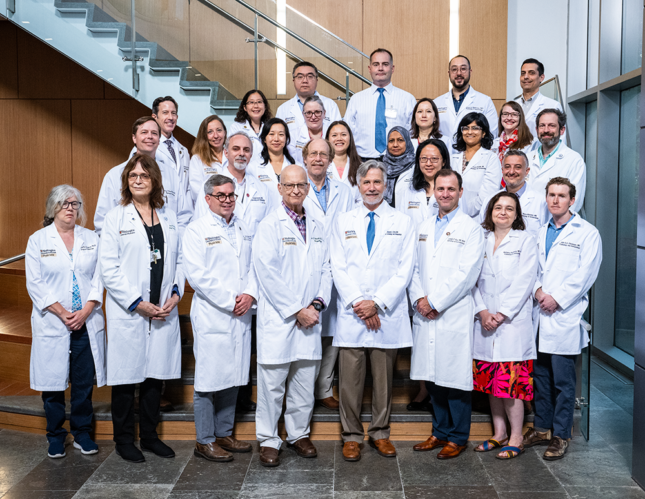
Division Chief: Joseph Gaut, MD, PhD
Exceptional applied and basic science research
Although examination of tissue by light microscopy continues to be the fundamental diagnostic technique in anatomic pathology, the division uses several other laboratory methodologies to precisely categorize both benign and malignant disease, including:
- Immunohistochemistry
- Electron microscopy
- Flow cytometry
The exceptional applied and basic science research environment of Washington University Medical Center provides the foundation for the Division of Anatomic & Molecular Pathology to play a leading role in medicine.
A strong commitment to training
The Department of Pathology & Immunology provides unsurpassed training in Anatomic Pathology through a subspecialty emphasis practice model.
Barnes-Jewish Hospital, St. Louis Children’s Hospital, Siteman Cancer Center and the Mallinckrodt Institute of Radiology, all located at Washington University Medical Center, provide a volume of case material that is necessary for residents to learn to diagnose the entire spectrum of human disease. The faculty’s expertise and commitment to resident education, coupled with daily teaching conferences and one-on-one sign-out, ensure that trainees are able to take full advantage is of the educational opportunities provided by the wide-ranging case material.
In response to the immediate needs of trainees who never seem to have enough time to “get it all done,” the division created the Washington Manual of Surgical Pathology. The fact that the list of contributors to the manual includes not only faculty members but also a number of residents and fellows emphasizes that surgical pathology at Washington University has always been a collaborative venture between faculty and trainees.
In addition to a strong foundation in morphologic-based diagnosis, the training program also provides thorough training in the ancillary techniques that are essential components of modern surgical pathology. Immunohistochemistry, flow cytometry, electron microscopy, and molecular genetic testing are fully integrated into the diagnostic activities of the division, and the practical use of ancillary diagnostic techniques is emphasized in teaching conferences and during sign-out.
At the end of their Anatomic Pathology training, residents are well prepared for a position as a practicing general pathologist. However, many trainees choose to pursue additional subspecialty training. The Division of Anatomic Pathology at Washington University offers numerous clinical fellowships.
Learn more about our Anatomic Pathology residency program and our fellowship training programs.
History
The modern era of surgical pathology at Barnes Hospital and Washington University School of Medicine began with the arrival of Lauren V. Ackerman, MD in 1948. The appointment of Dr. Ackerman, who was not a surgeon, signaled formal recognition that the field of surgical pathology had become sufficiently advanced to require practitioners specifically trained in the discipline. By the early 1960s, surgical pathology had been subsumed by the Department of Pathology, transforming Anatomic Pathology from “pathology of the dead,” based strictly on autopsies, to “pathology of the living” based on the evaluation of surgical specimens.
Division contact information
Billie Charlton
Executive Administrator
Office: BJC-IOH, Room 3407
Office Phone: 314-273-1742
Fax: 314-747-2662
Email: billie.charlton@wustl.edu
Mailing address:
Division of Anatomic and Molecular Pathology
Department of Pathology and Immunology
660 South Euclid Avenue
Mail Stop 8118-04-03
St. Louis, MO 63110
Street address:
BJC Institute of Health (BJCIH) Building
425 South Euclid Avenue
3rd floor, Room 3405
Mail Stop 8118-04-03
St. Louis, MO 63110